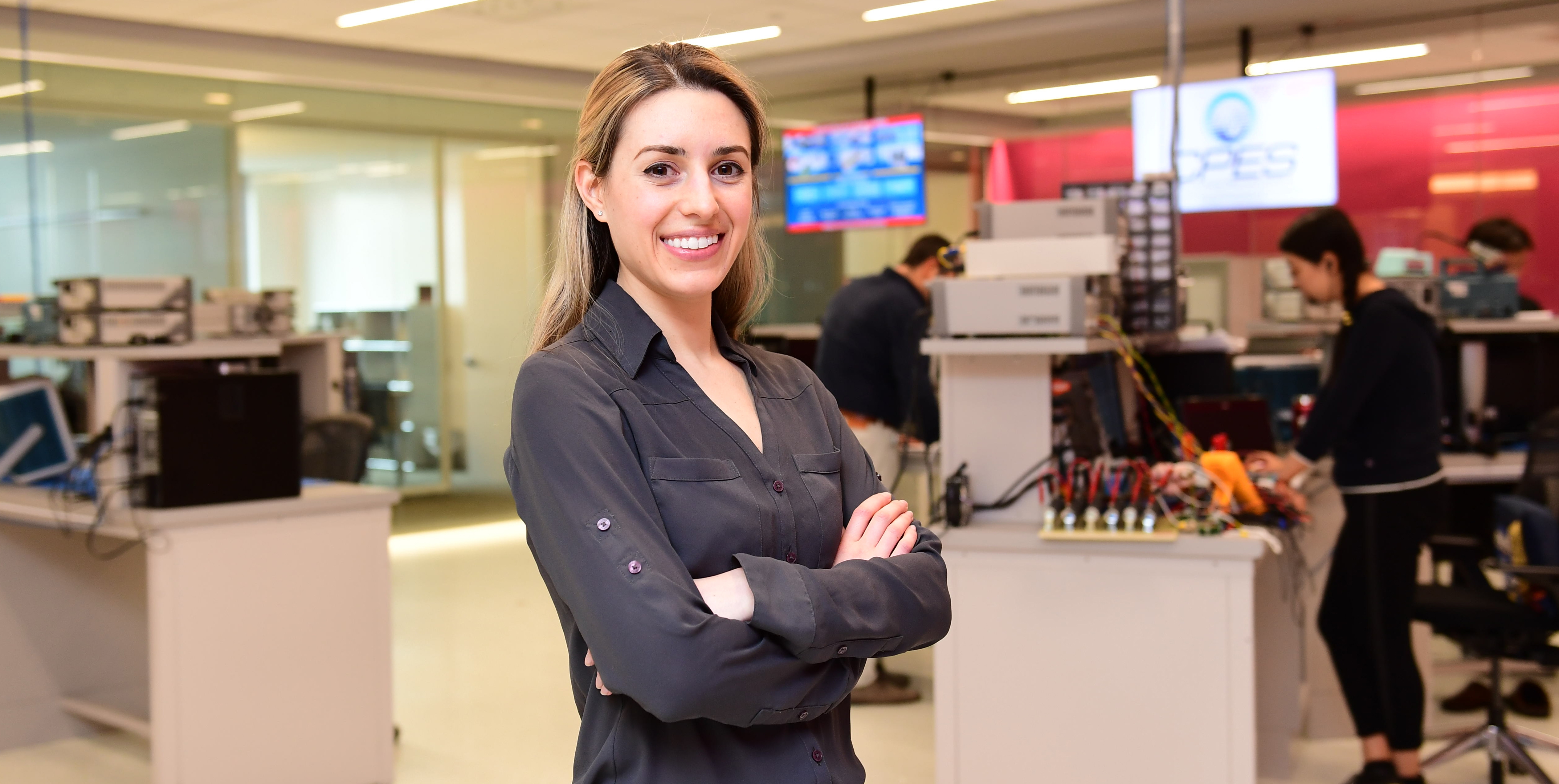New Faculty Member: Christina DiMarino
CPES: It's electric
May 20, 2019

- Joined ECE January 2019 as an Assistant Professor
- Assistant Director, Center for Power Electronics Systems, 2017-present
- Rolls-Royce Graduate Fellow, 2016-2017
- Webber Fellow, 2012-2015
- Ph.D., electrical engineering, Virginia Tech, 2018
- M.S., electrical engineering, Virginia Tech, 2014
- B.S., engineering, James Madison University, 2012
The power industry is bracing for a tidal wave of demand for electrification—electric vehicles, data centers, heat pumps, motor drives, renewable energy, and grid applications.
“To meet the needs of our drastically changing landscape, a flexible, reliable, resilient, and secure power system is essential,” says Christina DiMarino. “Power electronics and advanced materials can make this happen.”
With a new lab in the greater Washington, D.C. area, the Center for Power Electronics Systems (CPES) is set to serve as a linchpin as we pivot toward electrification worldwide; DiMarino is set to steer it.
Her first weeks as an assistant professor involved coordinating with government and industry contacts in Arlington, advancing high-density, high-speed, silicon-carbide (SiC) power module packaging, developing a hands-on course on electronics packaging, and helping to get the new hardware-focused lab up and running.
With natural light streaming in, and almost every wall a window, “the lab is an open book,” said DiMarino. “Anyone can walk by and see what we’re doing. It’s an opportunity to interact with other centers, labs, departments, and colleges.”
Module packaging research
As a doctoral student and research faculty member in the ECE department, DiMarino worked alongside other researchers from Virginia Tech and the University of Nottingham on the packaging of high-voltage silicon carbide (SiC) transistors. Now, as an assistant professor, she is pushing this research further.
Wide bandgap power semiconductors—specifically SiC power devices with voltage ratings exceeding 10 kV—can switch higher voltages faster and with lower losses than existing semiconductor technologies, explained DiMarino. This drastically reduces the size, weight, and complexity of medium-voltage systems. However, these devices also bring new challenges.
“Current power module packaging is limiting the performance of these unique switches,” said DiMarino.
She is leading a transdisciplinary project to address the electrical, thermal, and reliability challenges, as well as electrostatic and electromagnetic interference issues associated with a high-speed 10 kV device.
“By pooling our knowledge in packaging, materials, thermal, semiconductor devices, power electronics, electromagnetics, and high voltage, we can overcome these barriers and hasten the adoption of these game-changing devices,” said DiMarino.
Power electronics building blocks
DiMarino is also part of a team developing modular power electronics units, which “thanks to the flexibility of their connection, can be used in a variety of applications,” she explained.
The goal of the project, sponsored by the Office of Naval Research, is to quintuple the power density of power electronics building blocks by increasing integration at the package level.


